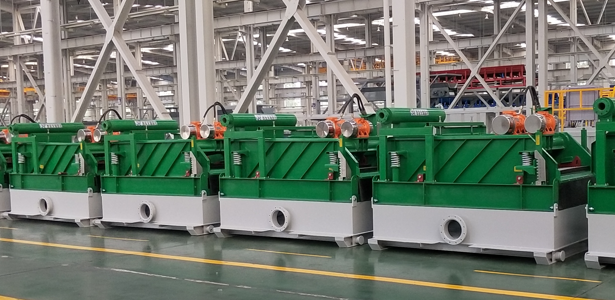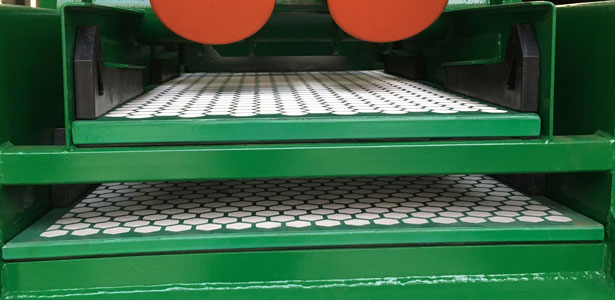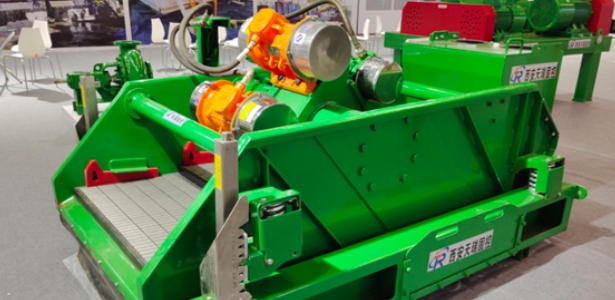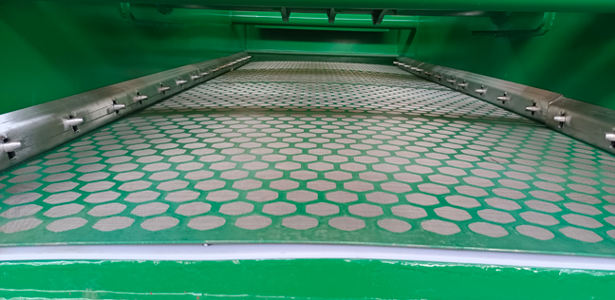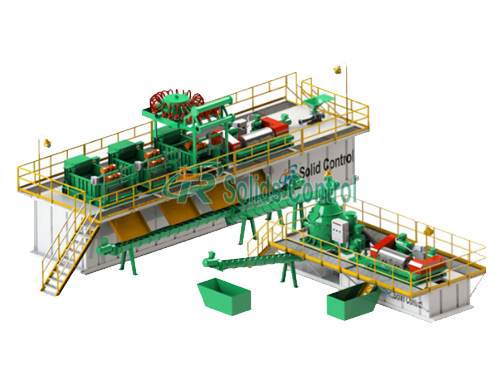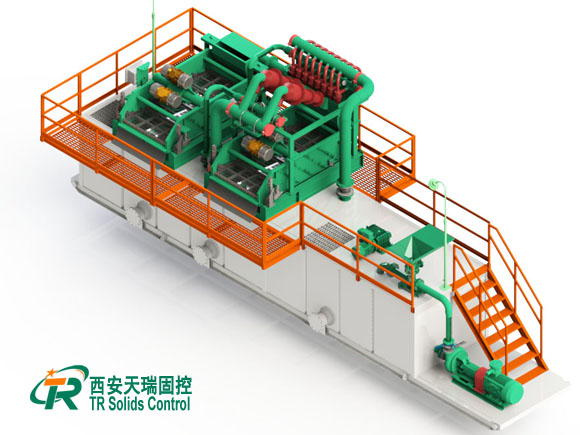Drilling Shale Shaker: Applications and Value in Oil-Gas Solids Control
In the process of oil and gas exploration and development, the Drilling Shale Shaker is one of the core pieces of equipment in the drilling solids control system, mainly used for the primary solid-liquid separation of drilling fluid. Through high-frequency vibration and screen filtration, the shaker can effectively separate cuttings and maintain the stability of the drilling fluid.
The Drilling Shale Shaker provided by TR Solids Control is widely used in various types of drilling projects due to its reasonable structural design, stable operation, and adaptability to different working conditions.
Basic working principle of a Shale Shaker: Regular vibrations are generated by a vibrating motor, causing the drilling fluid to form a flow path on the screen surface: drilling fluid passes smoothly through the screen for recovery; solid particles are retained and quickly discharged; reduces the sand content in the drilling fluid; improves the operating conditions of subsequent solids control equipment.
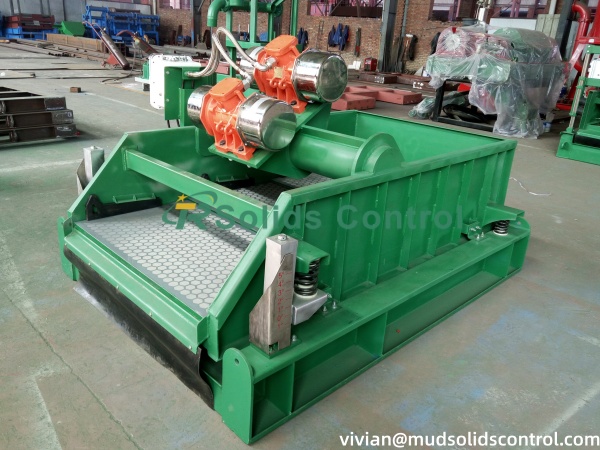
TR Solids Control in the design and application of Drilling Shale Shakers, focuses on equipment stability and practicality, mainly reflected in:
– Multiple mesh configurations to adapt to different drilling fluid systems
– Dual motors or linear vibration structures to ensure screening efficiency
– Adjustable screen box angles to meet different flow and viscosity requirements
– Modular structural design for easy on-site maintenance and replacement
Application Scenarios of Drilling Shale Shaker in Drilling Solid Control Systems
Onshore oil and gas drilling projects
Offshore platform drilling projects
Directional and horizontal well operations
High-circulation drilling fluid handling systems
By properly configuring the Drilling Shale Shaker, the overall efficiency of the solid control system can be effectively improved.
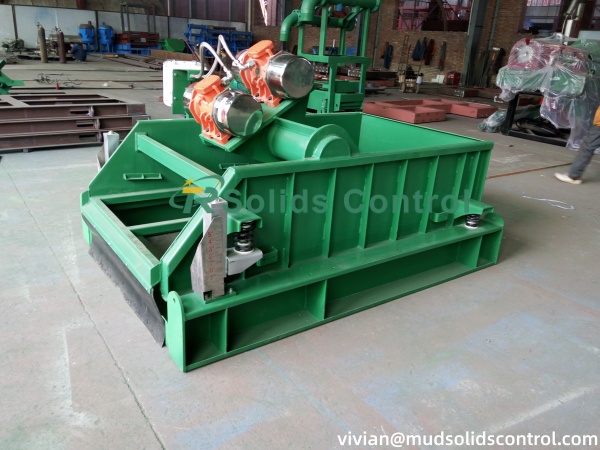
How to Choose the Right Drilling Shale Shaker?
When selecting a model, you can focus on the following factors:
– Drilling fluid handling capacity and flow requirements
– Screen size and ease of replacement
– Vibration type and excitation force parameters
– Stability of continuous equipment operation
– Manufacturer’s technical support and service capabilities
TR solid control equipment can provide various models of Drilling Shale Shakers according to different drilling conditions, meeting the diverse needs of projects.
As an important component of the drilling solid control system, the Drilling Shale Shaker plays a crucial role in ensuring the quality of drilling fluid, reducing equipment load, and improving operational efficiency. With the application experience of TR solid control equipment, it can provide more stable and sustainable solid control solutions for oil and gas drilling projects.
Shale Shaker: Core Role in Drilling Solid Control Operations
In the current oilfield solid control process, the shale shaker is a key fundamental equipment of the solid control system. It separates the solid particles in the drilling fluid, improves the quality of the circulating fluid and ensures the drilling efficiency. As one of the domestic enterprises providing solid control equipment, TR solid control equipment demonstrates stable performance in practical applications due to its robust structure, high adaptability in processing capacity, and convenient maintenance.
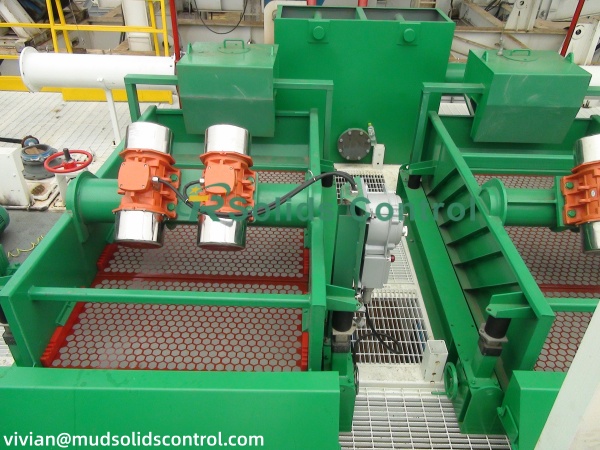
The main functions of the Shale Shaker:
- Solid-liquid separation. The vibrating screen separates the drilling fluid from the rock debris through the vibration generated by the excitation motor, improving the cleanliness of the mud.
- Protecting the subsequent equipment, reducing the wear of subsequent equipment such as cyclones, mud cleaners, and centrifuges, and extending their service life.
- Increasing the drilling speed, by improving the quality of the drilling fluid, maintaining the stability of the wellbore, thereby enhancing the overall drilling efficiency.
- Reducing drilling costs, reusing the clean mud, and reducing the consumption and treatment costs of the mud.
The Shale Shaker provided by TR Solid Control has the following design advantages:
- Multi-layer composite screen structure: Improves screening accuracy and durability.
- Dual-motor vibration system: Maintains high-efficiency amplitude, facilitating rapid solid discharge.
- Adjustable screen box angle design: Suitable for different mud densities and working conditions.
- Modular structure: Facilitates maintenance and replacement of the screen mesh, enhancing the flexibility of use.
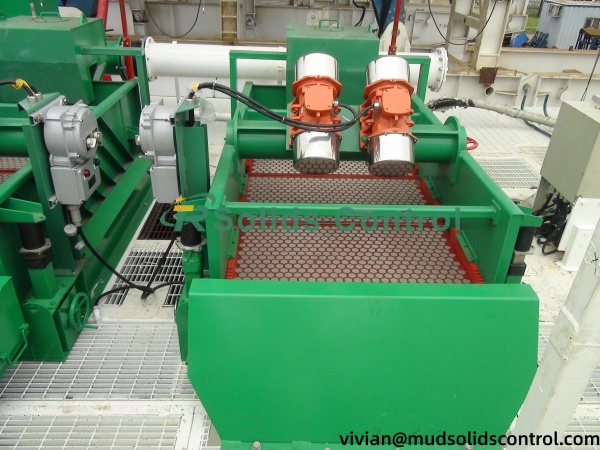
The application value of Shale Shaker in oilfield drilling is applicable to both onshore and offshore drilling solid control systems. It meets the mud treatment requirements of different depth drilling projects. It ensures the stability of drilling fluid performance. Improve the efficiency of continuous operations.
When choosing a shale shaker, the following aspects should be considered: processing capacity requirements; screen size and compatibility; excitation force and vibration mode; ease of maintenance; equipment stability and after-sales support. TR Solids Control and control equipment offers a range of oilfield vibrating screens. These can be customized according to specific conditions to meet the needs of different drilling teams.
The Shale Shaker is a key equipment for the stable operation of the solid control system. Combined with the application of TR solid control products, it can further improve the quality of the drilling fluid circulation, reduce equipment wear and tear, and enhance the overall drilling efficiency. Reasonable selection and configuration of the vibrating screen is of great significance for oilfield engineering.
Reputable Shale Shaker Manufacturer: TR solids control
Choosing the right shale shaker manufacturer is critical for drilling operators—shaker quality, performance, and durability directly impact operational efficiency, safety, and cost-effectiveness. Reputable manufacturers combine engineering precision, industry experience, and client-centricity to meet onshore, offshore, and geothermal drilling demands. A trusted name in the field, TR Solids Control has built a strong track record of delivering robust, tailored solutions that enable seamless solids control workflows.
For drilling professionals, identifying a reliable shale shaker manufacturer means evaluating core capabilities that match operational needs. First, manufacturing expertise counts: quality-focused manufacturers prioritize durable materials and processes to withstand harsh drilling conditions—extreme temperatures, corrosive fluids, constant vibration. As a dedicated provider, TR Solids Control builds shakers with high-strength steel frames, premium vibration motors, and wear-resistant components, ensuring long-term, high-performance operation even under rigorous conditions.

A key trait of a trustworthy shale shaker manufacturer is the ability to deliver customizable solutions. Drilling projects differ vastly in scale, location, and requirements—what works for large offshore rigs may not suit compact onshore sites or high-temperature geothermal wells. Reliable manufacturers recognize these gaps and collaborate with clients to tailor equipment accordingly. TR Solids Control excels here, offering flexible configurations (adjustable vibration frequencies, varied screen mesh sizes, modular designs) to adapt to unique drilling conditions, delivering high-capacity or space-saving units that integrate seamlessly into existing workflows.
Rigorous quality control is non-negotiable for a reliable shale shaker manufacturer. With drilling operations tolerating little equipment failure, strict testing and inspection are essential to meet industry standards and performance benchmarks. TR Solids Control enforces tight quality control across its manufacturing cycle—from raw material testing to final assembly and performance trials—ensuring every shaker performs as designed. This commitment minimizes downtime, cuts maintenance costs, and builds client confidence in equipment reliability.

Beyond product excellence, a dependable shale shaker manufacturer provides comprehensive client support—from pre-purchase consultations and installation guidance to maintenance training and after-sales service—to maximize equipment value. TR Solids Control excels here: its team of industry experts collaborates closely with clients to assess needs, offer technical advice, and resolve issues promptly, ensuring smooth operations whether assisting with screen replacement, troubleshooting, or system optimization.
In the competitive drilling industry, partnering with a reliable shale shaker manufacturer is an investment in long-term operational success. TR Solids Control has established itself as a trustworthy provider by consistently delivering high-quality, customizable equipment supported by exceptional service. Its shale shakers efficiently perform core solids separation—removing cuttings from drilling fluid to preserve mud properties—and adapt seamlessly to the evolving demands of modern drilling projects.
For drilling professionals seeking a shale shaker manufacturer they can depend on, TR Solids Control offers the perfect balance of expertise, quality, and flexibility. By choosing a reliable shale shaker manufacturer like TR, operators can enhance operational efficiency, reduce risks, and focus on what matters most—delivering successful drilling projects.
M-I SWACO Shakers: Reliable Drilling Solids Control
M-I SWACO Shakers are a staple in the drilling industry, delivering reliable solids separation for onshore, offshore, and geothermal projects. As a vital part of mud management systems, they separate cuttings from drilling fluid, preserve fluid properties, and support operational efficiency and environmental compliance. Valued for adaptability across diverse drilling conditions, these shakers require compatible, high-performance complementary or replacement equipment—and TR Solids Control provides engineered solutions that meet industry standards and integrate seamlessly with M-I SWACO systems.
M-I SWACO Shakers deliver robust, consistent performance that underpins effective solids control workflows. Leveraging precision vibration technology and durable screens, they efficiently remove cuttings of all sizes—from fine sand to coarse rock—maintaining drilling mud viscosity and cleanliness for optimal operations. Whether as a primary separator or part of a multi-stage system, these shakers reduce downtime, cut operational costs, and minimize environmental impact, making them a globally popular choice for drilling projects.
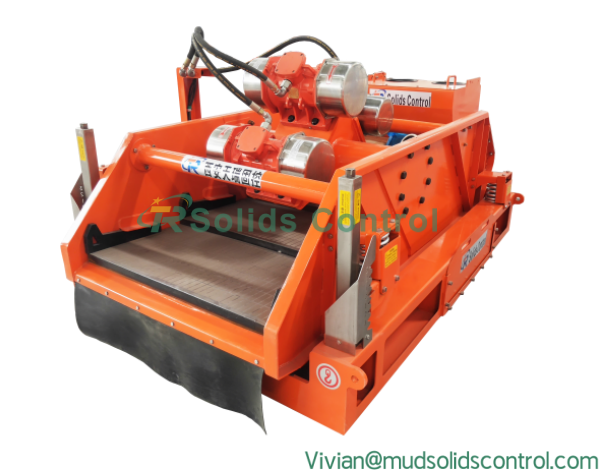
Compatibility is critical for operators upgrading solids control setups or replacing aging units—and TR Solids Control delivers fully compatible shale shakers for M-I SWACO systems. Every component—frame dimensions, vibration frequency, screen mounts, and fluid flow paths—is engineered to match M-I SWACO specifications, ensuring seamless integration without costly rig modifications. Whether expanding fleets or replacing worn units, TR’s solutions offer the same reliability and performance M-I SWACO Shakers are known for.
Beyond compatibility, TR Solids Control shale shakers embody the durability and adaptability central to quality solids control equipment. Built with high-strength materials for harsh drilling conditions, they feature premium vibration motors for stable performance and a range of screen options to handle diverse drilling fluids and cuttings sizes. Maintenance-friendly design—with accessible components and quick-release screen mechanisms—minimizes routine downtime, keeping drilling operations on track.
TR Solids Control compatibility focus goes beyond hardware: its team collaborates closely with clients to address operational needs—from high-volume offshore rigs to small-scale onshore projects using M-I SWACO Shakers. This client-centric approach tailors each compatible shale shaker to unique demands, such as corrosive fluids or extreme temperatures. Plus, comprehensive technical support for installation, calibration, and troubleshooting helps operators maximize integrated solids control system performance.

In an industry where efficiency and reliability are paramount, M-I SWACO Shakers are trusted solids control solutions. For operators looking to extend their system value or source reliable replacements, TR Solids Control delivers fully compatible shale shakers—precision-engineered, durable, and client-focused—to ensure seamless integration, consistent performance, and cost-effective, compliant drilling operations.
To sum up, M-I SWACO Shakers remain a cornerstone of effective solids control in drilling, and TR Solids Control has the capability to produce shale shakers that are completely with these systems. Whether you’re looking to expand your solids control fleet, replace outdated equipment, or optimize your existing setup, TR Solids Control compatible shale shakers offer a reliable, seamless solution that aligns with the performance and specifications of M-I SWACO Shakers.
Mud Shale Shaker for Efficient Drilling Solids Control
Mud shale shakers are the first and most critical link in drilling mud solids control systems: they separate cuttings from drilling fluid, maintain mud properties, and ensure smooth drilling operations. Well-designed units directly impact efficiency, cost management, and environmental compliance across onshore, offshore, and geothermal projects—making a trusted supplier a key choice for drilling contractors prioritizing stable performance.
Effective solids control relies on precision-engineered mud shale shakers—and TR Solids Control is a leading provider of customized solutions in this space. Our shakers prioritize durability and separation accuracy, boasting a high-strength steel frame for harsh drilling conditions and premium vibration motors for stable, optimal cuttings removal. With a range of screen sizes to handle diverse fluids and cuttings (from fine sand to coarse rock), they ensure drilling mud meets your exact operational standards.
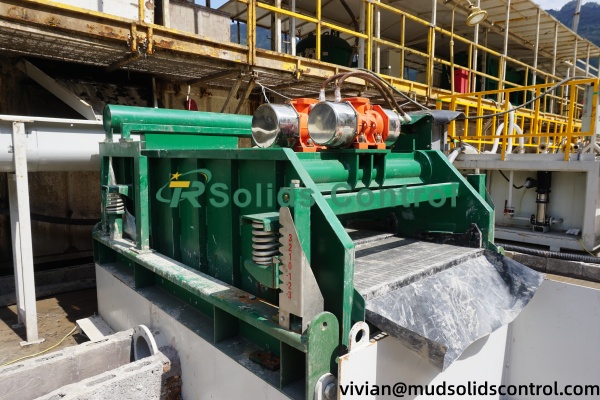
A key advantage of TR Solids Control’s mud shale shakers is their exceptional adaptability to diverse drilling scenarios. Configurable with dual/triple decks for high-volume operations enabling uninterrupted mud recovery and available as compact modular units for space-constrained sites offshore platforms, compact onshore locations, they retain full functionality while maximizing efficiency. Plus, hassle-free maintenance features—quick-release screen clamping and accessible lubrication points—minimize downtime.
Beyond top-tier hardware, TR Solids Control offers comprehensive technical support for its mud shale shakers. Our team partners closely with clients to address unique drilling challenges—high-temperature wells, corrosive fluids, remote sites—and recommends tailored configurations. This customer-centric approach ensures each shaker meets industry standards and project-specific needs, delivering lasting value and reliable performance.
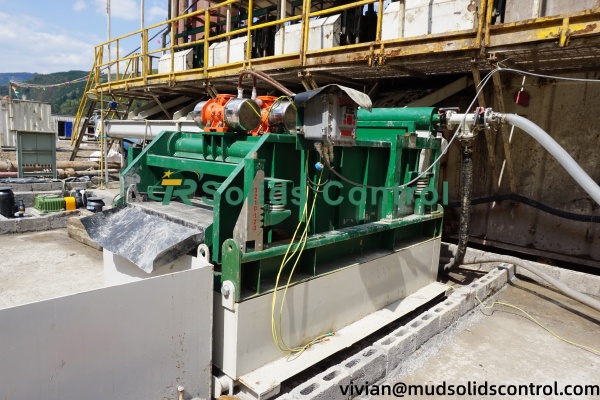
In today’s competitive oilfield industry, efficient drilling mud recovery is critical. High-quality mud shale shakers reduce fresh mud purchases, cut waste disposal costs, and support environmental compliance by minimizing contaminated fluid discharge. Committed to innovation, TR Solids Control equips its shakers with the latest vibration technology and material science advances to deliver consistent, high-performance solids separation.
Whether you’re upgrading an existing solids control system or outfitting a brand-new drilling project, TR Solids Control’s mud shale shakers deliver the reliability, efficiency, and adaptability needed to support your operational goals.
With a focus on quality engineering and close customer collaboration, TR remains a trusted partner for drilling professionals who depend on high-performance mud shakers to get the job done right—especially when it matters most.
Shale Shaker for Sale: How to Choose the Right Model for Your Drilling Needs
If you are searching for a dependable shale shaker for sale, understanding key selection factors can help you choose equipment that supports efficient drilling mud treatment. The shale shaker plays a crucial role in removing solids from drilling fluids, reducing equipment wear and improving overall rig performance. Many operators worldwide also consider solutions from TR Solids Control, a recognized supplier of solids control equipment.
What the Shale Shaker Does in Drilling Operations
The shale shaker is the first-stage solids control device on a drilling rig. Its main functions include:
- Separating large drilled cuttings from circulating mud
- Maintaining stable mud viscosity and density
- Protecting downstream equipment such as desanders, centrifuges, and pumps
- Reducing operational costs by recycling usable drilling fluid
When comparing shale shaker for sale options, mud processing efficiency and screen compatibility are essential considerations.
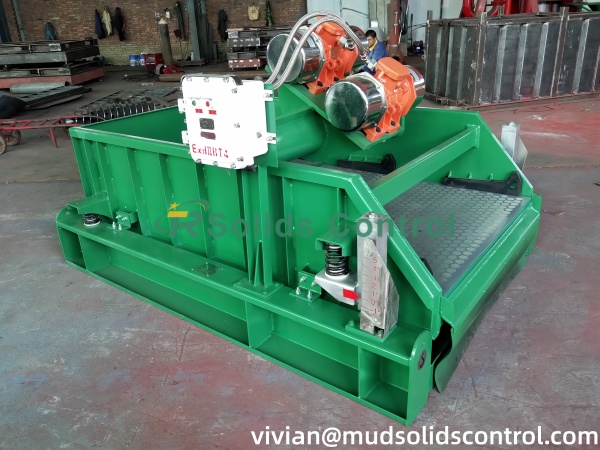
Key Factors to Consider When Choosing Shale Shaker for Sale
- Vibration Mode (Linear or Elliptical Motion): Different vibration modes deliver different performance: ①Linear motion: suitable for heavy loading and high flow rates. ②Balanced elliptical motion: smoother operation and energy-efficient. Choose the mode according to drilling conditions and solids loading.
- Screen Type & API Rating: Screen quality greatly affects separation efficiency. Check for: ①API RP 13C compliance②Mesh size options③Screen frame material (plastic, composite, steel)④Screen longevity. TR Solids Control provides a wide range of API-certified screens compatible with many shaker models.
- Processing Capacity: Capacity should match rig size and expected solids volume. Typical parameters include: ①Flow rate ②Screen area ③G-force. These determine how effectively the shaker manages heavy drilling loads.
- Structure & Maintenance Convenience: Look for: ①Quick screen replacement systems ②Durable vibration motors ③Corrosion-resistant materials ④Easy access for routine maintenance. A well-designed shale shaker reduces downtime and maintenance costs.
Where to Find Shale Shaker for Sale
When searching for a shale shaker for sale, compare suppliers based on:
- Product specifications and performance
- Service support and spare parts supply
- Customizable design options
- Delivery capability and industry experience
TR Solids Control offers global supply and technical assistance, making it a reliable choice for many drilling contractors.

Why Many Operators Choose TR Solids Control
TR Solids Control produces a range of shale shakers known for:
- Stable performance
- API-compliant screens
- Durable structural design
- Flexible customization for different rigs
Whether you need linear motion shakers, dual-shaker systems, or high-capacity units, TR provides practical solutions for various oilfield environments.
Choosing the right shale shaker for sale requires careful evaluation of vibration mode, screen type, capacity, and structural durability. By partnering with a trusted manufacturer such as TR Solids Control, drilling operations can benefit from stable mud treatment and improved cost efficiency.
Shale Shaker for Oilfield Drilling: Structure, Functions, and Application Guide
The shale shaker for oilfield drilling is the primary solids control device used to remove cuttings and large particles from drilling mud. As the first stage of the mud treatment system, the shale shaker plays a critical role in maintaining drilling fluid performance, protecting downstream equipment, and ensuring smooth drilling operations.
What Is the Shale Shaker for Oilfield Drilling
The shale shaker is a vibrating-screen-based separation device installed on drilling rigs. Its main function is to process the returning mud from the wellbore, filter out drilling cuttings, and ensure that clean, reusable drilling fluid flows back into the circulation system. Core Features Include: High-frequency vibration; Multiple screen layers; Adjustable deck angle; Controlled mud flow distribution. Oilfield shakers typically use linear motion or elliptical motion to achieve stable and efficient mud separation.

Main Functions of Shale Shaker in Oilfield Drilling
- Primary Solids Removal: Eliminates large solids from drilling mud before it enters desanders, desilters, or centrifuges.
- Ensures Drilling Fluid Quality: Stable separation reduces mud viscosity, improves lubrication, and protects downhole tools.
- Extends Lifespan of Solids Control Equipment: Cleaner mud greatly reduces the load on hydrocyclones and centrifuges.
- Enhances Drilling Efficiency: Well-maintained mud shortens drilling time and minimizes equipment downtime.
- Supports Environmental Compliance: Efficient separation reduces waste volume and improves mud recycling.
Structure of Shale Shaker for Oilfield Drilling
- Vibration motors
- Screen panels (single, double, or triple layers)
- Screen deck & support frame
- Mud distribution box
- Damping springs
- Control panel
For oilfield use, screen mesh typically ranges from API 20 to API 400, depending on formation conditions and mud density.
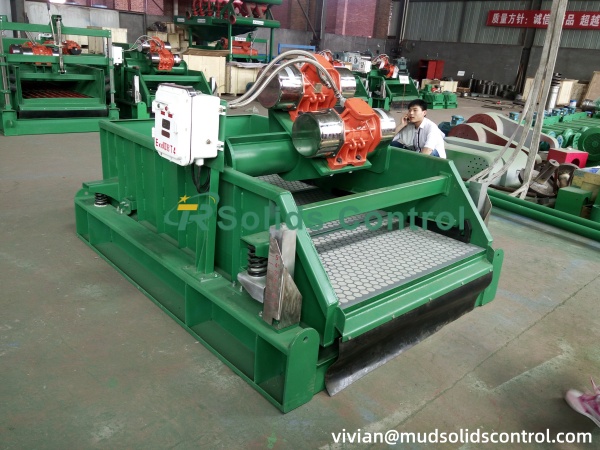
How to Choose Shale Shaker for Oilfield Drilling
- Mud flow rate: Choose suitable screen area and vibration force.
- Drilling depth & formation conditions: Deep wells usually require linear motion models.
- Screen type compatibility: Composite frame screens offer long life and stable performance.
- Vibration strength (G-force): Higher G-force improves solid removal for difficult formations.
- Maintenance accessibility: Quick-screen-change systems reduce downtime.
- Supplier technical support: Professional manufacturers ensure reliable performance and after-sales service.
Applications of Shale Shaker in Oilfield Operations
- Land drilling rigs
- Offshore drilling platforms
- Workover rigs
- Mud recycling units
- High-flow drilling operations
- Oilfield waste management systems
It is an essential component of any solids control system.
The shale shaker for oilfield drilling is an indispensable part of the solids control process. With proper selection, installation, and maintenance, a shale shaker ensures efficient solids removal, stable drilling fluid quality, and improved drilling performance. Whether for land rigs or offshore platforms, choosing the right shaker design greatly influences operational reliability and cost-effectiveness.
Shale Shakers: Key Functions in Drilling Rig Mud Systems
The shale shaker in drilling rig mud systems is the primary solids control device responsible for removing drill cuttings from the circulating drilling fluid. As the first-stage separation equipment, the shale shaker ensures stable mud performance, protects downstream machinery, and supports continuous drilling operations. Its working efficiency directly affects drilling safety, equipment service life, and overall mud cost.
What Is the Shale Shaker in Drilling Rig
At its core, the drilling rig shale shaker is a mechanical screener that removes large/medium drill cuttings (rock, shale, formation debris) from drilling mud. Drilling fluid cools/lubricates the drill bit, transports cuttings to the surface, and maintains pressure to block formation fluids—contamination from unseparated cuttings reduces its viscosity and impairs these critical functions.
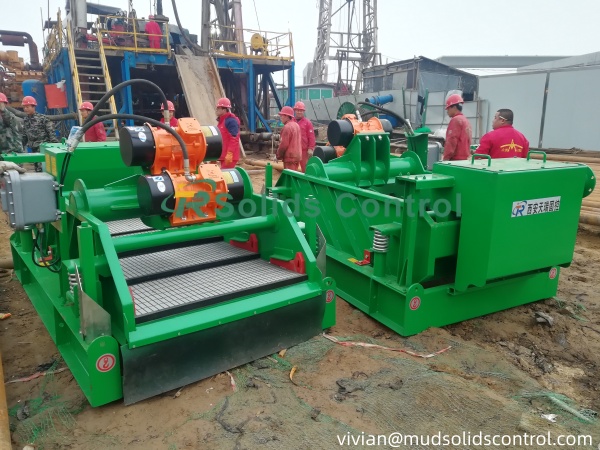
Working Process of Shale Shaker in Drilling Rig
The shale shaker operates on a simple yet highly effective principle: Drilling fluid mixed with cuttings is pumped to the surface and fed onto a vibrating screen (mounted on a frame driven by electric/hydraulic motors at specific frequency and amplitude). Vibration moves cuttings across the screen—larger particles are discharged as waste, while cleaned fluid passes through and re-enters the mud system for reuse.
Core Functions of Shale Shaker in Drilling Rig Operations
- Protecting Drilling Fluid Quality: A high-performance shale shaker removes most solid particles before fluid reaches downstream equipment, reducing their workload, preserving fluid chemical properties, extending fluid lifespan, and cutting replacement costs.
- Enhancing Drilling Efficiency: Clean drilling fluid maintains optimal density and viscosity for pumping and cuttings transport. By preventing drill bit overheating/clogging, the shale shaker enables faster penetration rates and shorter drilling cycles.
- Ensuring Operational Safety: Consistent fluid density (maintained via effective solids separation) preserves required pressure for well control, mitigating blowout risks from contaminated fluid-induced pressure loss.
- Reducing Environmental Impact: Efficient solids separation minimizes contaminated fluid disposal volume, lowering waste management costs. Reusable treated fluid and responsible solid waste handling reduce the drilling operation’s environmental footprint.
Why Shale Shaker Is Essential in Rig Mud Systems
- Controls Solids Content: Removing solids reduces mud density and viscosity, ensuring efficient drilling.
- Protects Downstream Equipment: Hydrocyclones, centrifuges, and pumps work more efficiently with cleaner mud.
- Improves Drilling Safety: Stable mud properties maintain wellbore pressure and prevent drilling hazards.
- Reduces Operational Costs: Cleaner mud extends screen life, reduces chemical usage, and lowers disposal volume.
How to Select Shale Shaker for Drilling Rig
- Required processing capacity
- Motion mode (linear or elliptical)
- API screen size compatibility
- Vibration G-force
- Screen replacement system
- Rig space limitations
The well-selected shale shaker enhances entire mud system efficiency and reduces downtime.
The shale shaker in drilling rig operations plays a vital role in solids control and drilling mud management. By efficiently removing cuttings, it supports clean mud circulation, reduces equipment wear, and ensures smooth and cost-effective drilling. With the right design and proper maintenance, a shale shaker significantly improves rig performance and operational stability.
Shale Shaker — Essential Equipment for Drilling Mud Solids Control
The shale shaker is the primary solids control device used in drilling and mud recycling systems. It removes large cuttings and unwanted particles from drilling fluid through a combination of vibration force and fine screen mesh. By maintaining clean and stable drilling mud properties, the shale shaker improves drilling efficiency and protects downstream equipment such as desanders, desilters, and centrifuges. TR Solids Control offers a full range of shale shakers designed for oil and gas drilling, HDD, tunneling, and mining applications.
The working principle of a shale shaker
- Drilling mud enters the feeding box.
- Dual vibration motors create linear or elliptical motion.
- Mud spreads across the screen surface.
- Liquid phase passes through the mesh openings.
- Solid cuttings move toward the discharge end and exit the shaker.
- Clean mud flows to the tank below and is reused in the drilling process.
The efficiency depends on vibration G-force, screen mesh size, deck angle, and mud properties.
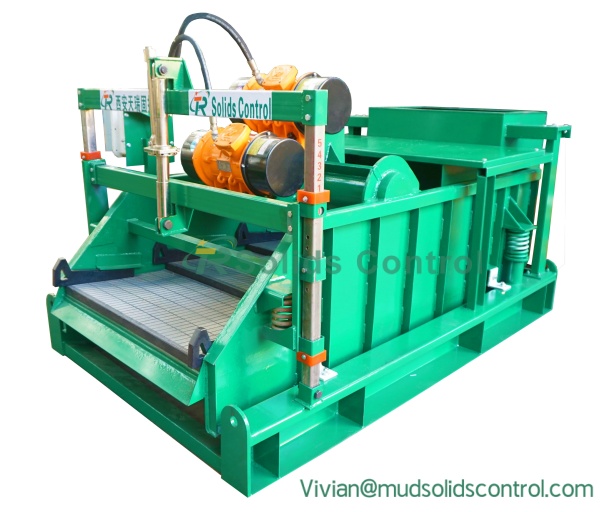
Key Features of Shale Shaker
- High G-force vibration for consistent separation.
- Adjustable deck angle for different drilling conditions.
- Quick-lock screen system for fast replacement.
- Composite frame screens for longer service life.
- Optional linear motion or balanced elliptical motion.
- Simple maintenance and stable performance.
Types of Shale Shakers
- Linear Motion Shale Shaker: Suitable for large solids volume and heavy mud systems.
- Balanced Elliptical Motion Shale Shaker: Offers smooth operation and improved fine-screen performance.
- Double-Layer Shale Shaker: First layer for coarse separation, second layer for fine screening; ideal for high-demand mud recycling.
- Mongoose Shale Shaker (Compatibility Type): Designed with screen systems compatible with Mongoose-style screen panels.
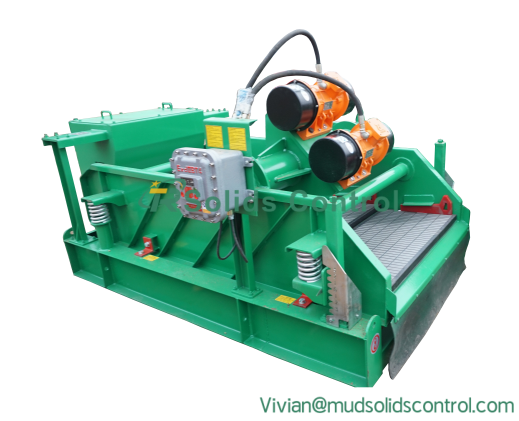
Applications of Shale Shakers
- Oil & gas drilling rigs
- Horizontal directional drilling (HDD)
- Tunnel boring and piling projects
- Mining and mineral processing
- Environmental mud treatment
- Industrial wastewater separation
TR Solids Control provides customized shaker configurations for different industries and project sizes.
Benefits of Using High-Quality Shale Shaker
- Reduces mud cost
- Improves drilling rate of penetration
- Protects mud pumps and hydrocyclones
- Minimizes waste and supports environmental compliance
- Enhances overall mud system efficiency
The shale shaker is the foundation of an efficient solids control system. Its ability to separate particles from drilling mud ensures smoother operations, reduced wear on equipment, and lower overall drilling costs. With reliable vibration motors, durable screen structure, and customizable design, TR Solids Control provides shale shakers suitable for a wide range of drilling and industrial projects.
Mongoose Shale Shaker: Core Features, Benefits & Oilfield Applications
The Mongoose shale shaker—renowned in oilfield solids control—boasts stable performance, flexible configuration, and efficient mud separation. Widely used in onshore/offshore drilling, it’s compatible with composite frame screens for reliable separation and long service life. Understanding its structure, working principle, and application range aids in selecting the right equipment for diverse drilling conditions.

Structural Features of the Mongoose Shale Shaker
- Double-Deck or Single-Deck Screen System: Depending on the model, the shaker can be configured as a single-deck or dual-deck design for higher processing capacity and improved fine solids removal.
- Composite Frame Shaker Screens: Compatible with high-quality composite screens that provide excellent filtration efficiency, long lifespan, and resistance to corrosion and wear.
- Vibratory Motors with Adjustable Settings: The dual vibration motors deliver strong linear motion, and operators can adjust vibration intensity according to drilling mud properties.
- User-Friendly Tensioning System: Quick-lock or wedge-type screen fixing mechanisms allow fast replacement and reduce non-productive time during drilling operations.
- Rugged Base and Isolation System: Designed to minimize vibration transfer and ensure stable operation in various drilling environments.
Working Principle of the Mongoose Shale Shaker
- Drilling mud enters the shaker through the flowline.
- Vibration motors generate linear motion, spreading mud evenly across the screen surface.
- Solids are transported forward and discharged, while clean mud passes through the mesh and flows to the tank below.
- The shaker continuously removes cuttings, improving mud quality and protecting downstream equipment such as desanders, desilters, and centrifuges.
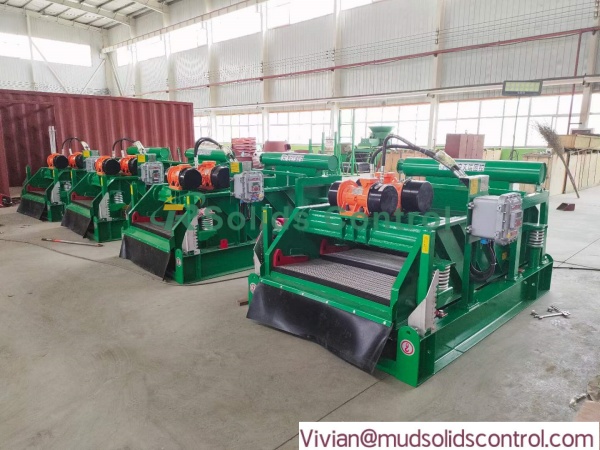
Advantages of the Mongoose Shale Shaker
- High Screening Efficiency: Composite screens and linear motion provide consistent separation of fine and coarse solids.
- Flexible Configuration: Optional dual-deck designs or additional modules improve mud processing performance for different drilling programs.
- Easy Maintenance: Quick screen replacement, simple structure, and robust components reduce maintenance time and cost.
- Compatibility with Industry-Standard Screens: Mongoose screens (API 20–325) are widely available and suitable for a range of drilling mud conditions.
- Stable Performance in Harsh Conditions: The shaker maintains reliable operation even during heavy mud flow, high solids load, or long drilling cycles.
Applications of the Mongoose Shale Shaker
- Oil & gas drilling solids control systems
- Workover and re-entry drilling
- HDD (Horizontal Directional Drilling)
- Mining slurry processing
- Geothermal drilling
- Environmental mud treatment projects
Replacement Screens for Mongoose Shakers
Many operators choose Mongoose-type screens because:
- Composite frame screens extend service life
- Mesh options meet API RP 13C standard
- Excellent resistance to wear, heat, and chemical additives
- Designed for high vibration and high-throughput conditions
TR Solids Control offers Mongoose replacement screens that match original dimensions and performance.
The Mongoose shale shaker remains a widely adopted option in modern drilling solids control systems due to its efficient separation capability, durable structure, and compatibility with composite frame screens. Whether for land rigs, offshore drilling, or HDD applications, it provides a reliable and cost-effective solution for maintaining clean drilling fluids.




